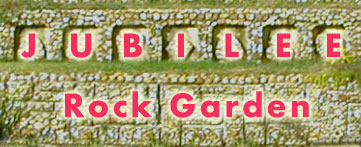Terraced Garden
The central garden at Jubilee Rock Garden is a terraced hill with several tiers of retaining walls surmounted by a rainbow archway. In this postcard view from around 1959 the terraced walls are planted with dense flowers of one color, while the lower part is a grassy lawn. A graceful wall surrounds the garden, supporting a line of square posts topped by built-in flower pots. Between the posts, undulating concrete rope-like railings recall similar fences at the Dickeyville Grotto. There is a small gate at the front of the fence for a gardener but it doesn't appear inviting for visitors to enter the lawn. The hillside terraces are packed with flowers without a path for visitors to climb the hill or see the garden from past the driveway driveway. The arch at the top appears to be an eyecatching shape and not a gateway or entrance to anything that garden viewers might access.
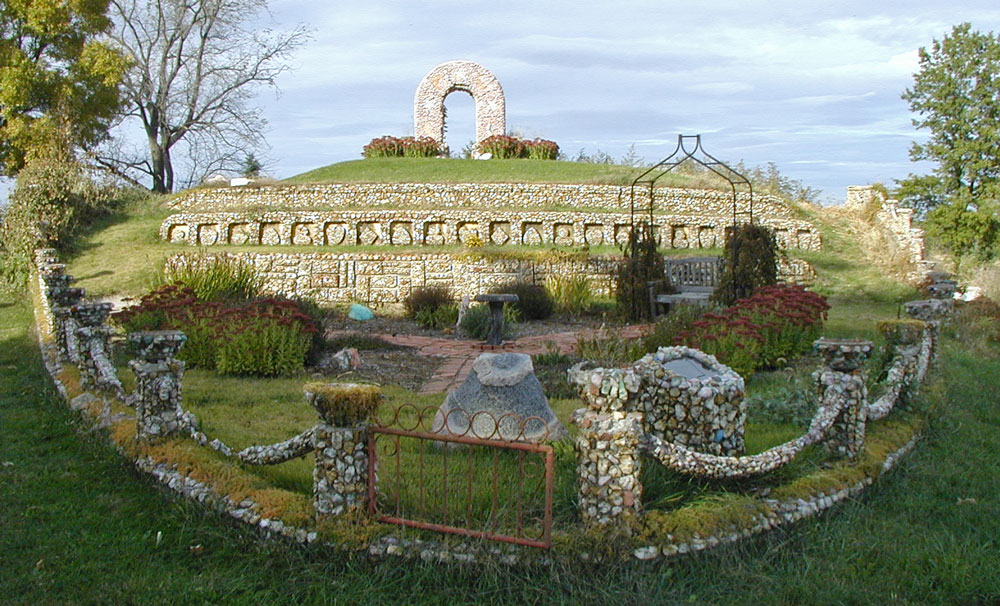
By 2003 when these photos were taken the garden plantings were a little less severe. Grass now runs up the hill and across the terraces, and newer flower beds have taken over the flat ground. Three stepping stone paths cross the flower beds to a sitting bench under an arbor to add a comfortable repose to the space.
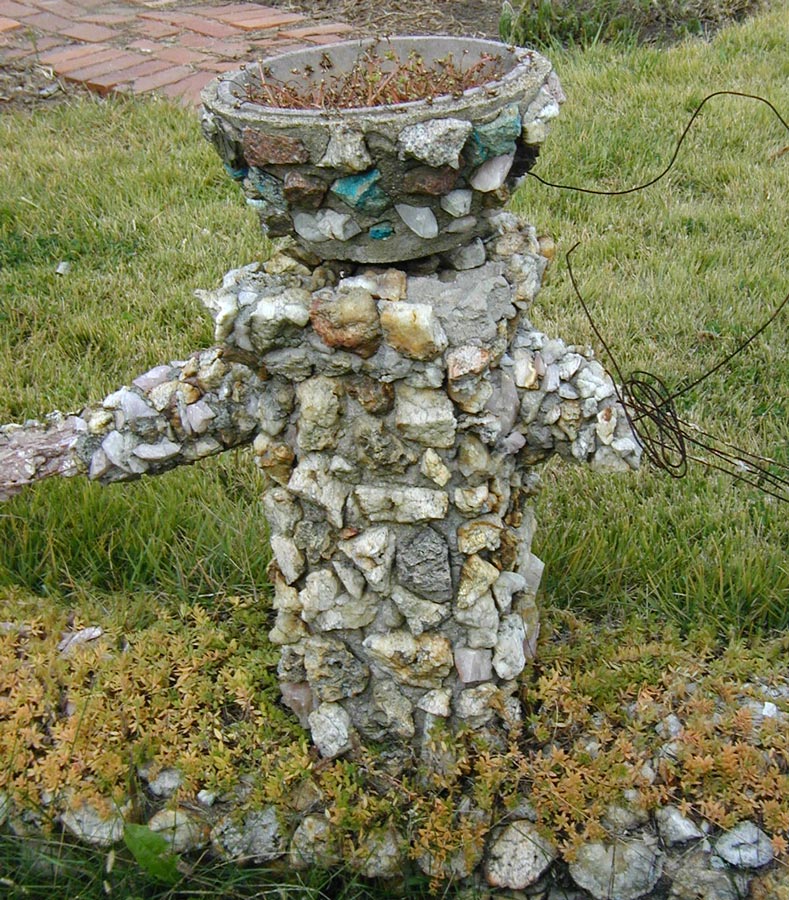
A broken fence rail reveals a bit of William Notzke's construction methods: the undulating fence forms are formed around and supported by baling wires. .
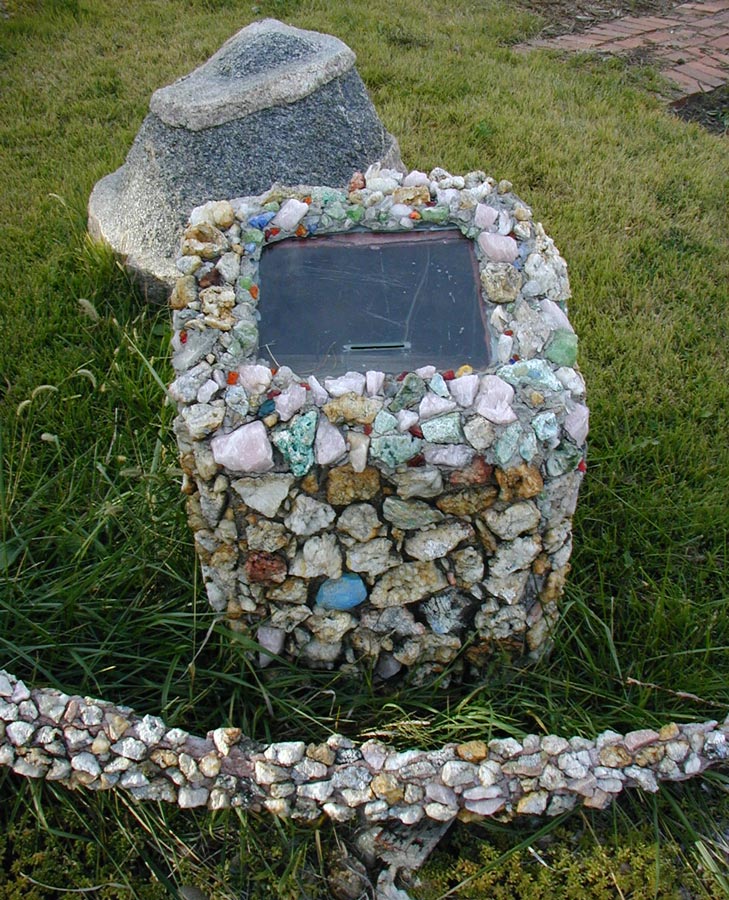
Just inside the front gate is an unusual natural rock with strangely eroded seams. William Notzke must have thought this boulder intriguing enough to place it in this prominent place at the head of the triangular garden. The rock planter which appears in the 1959 postcard no longer stands, but a square pedestal to the right of the boulder is a newer addition. The pedestal appears to be a donation box, with a plexiglass top and slot to insert bills or coins.
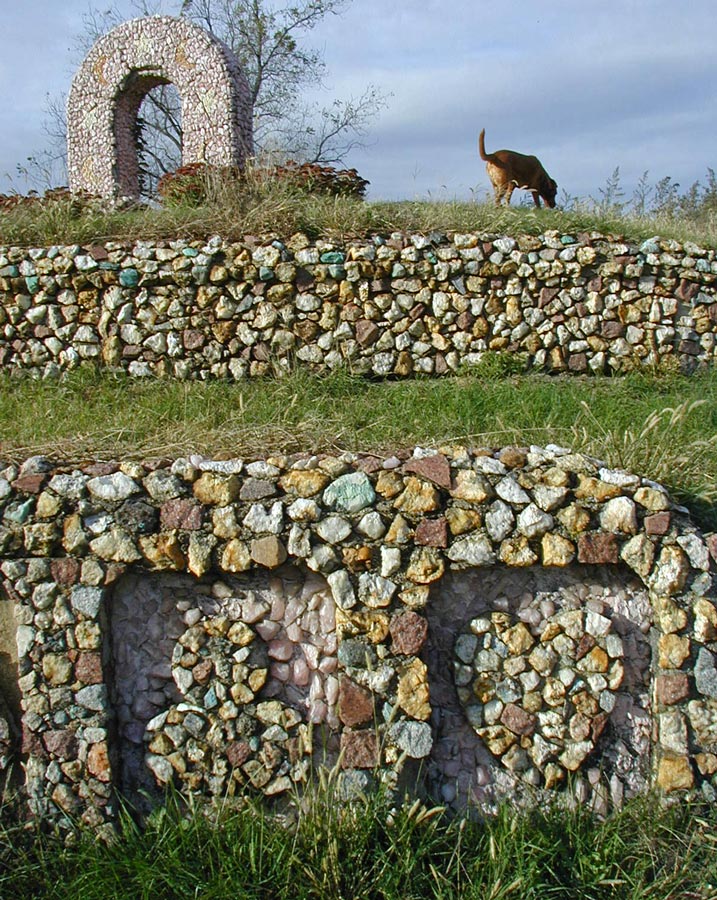
The second tier of retaining walls is built with recessed niches with raised playing card suits inside. Some of the niches have a background of pink quartz, but others are unfinished concrete.
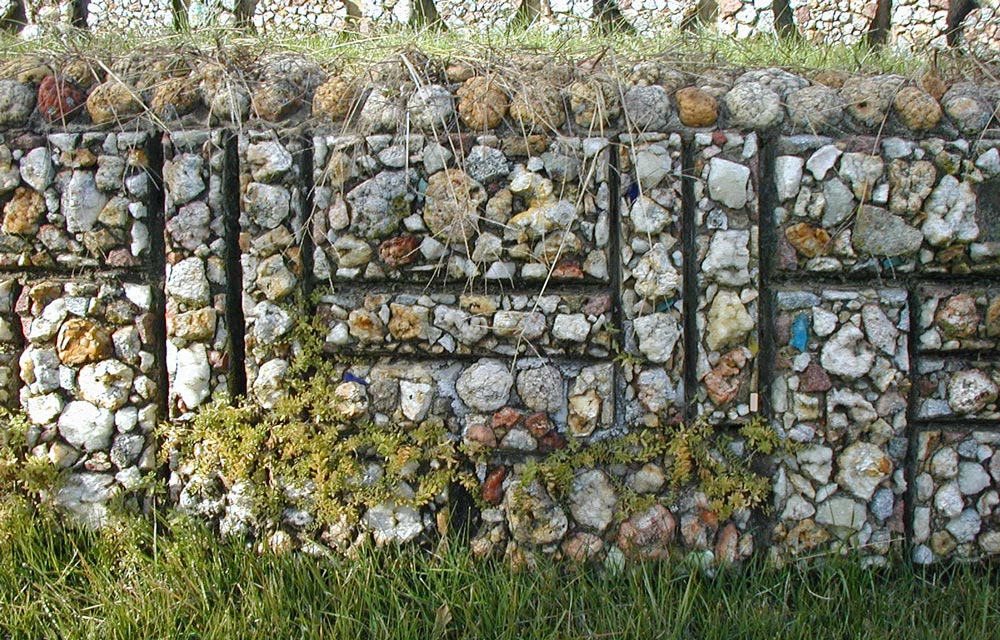
The walls are carefully constructed and embedded with colorful rocks and occasional lumps of colored glass. In the geometric patterns of the first tier it appears that small rocks were chosen to fit around larger ones to fill out the rectangular shapes precisely.
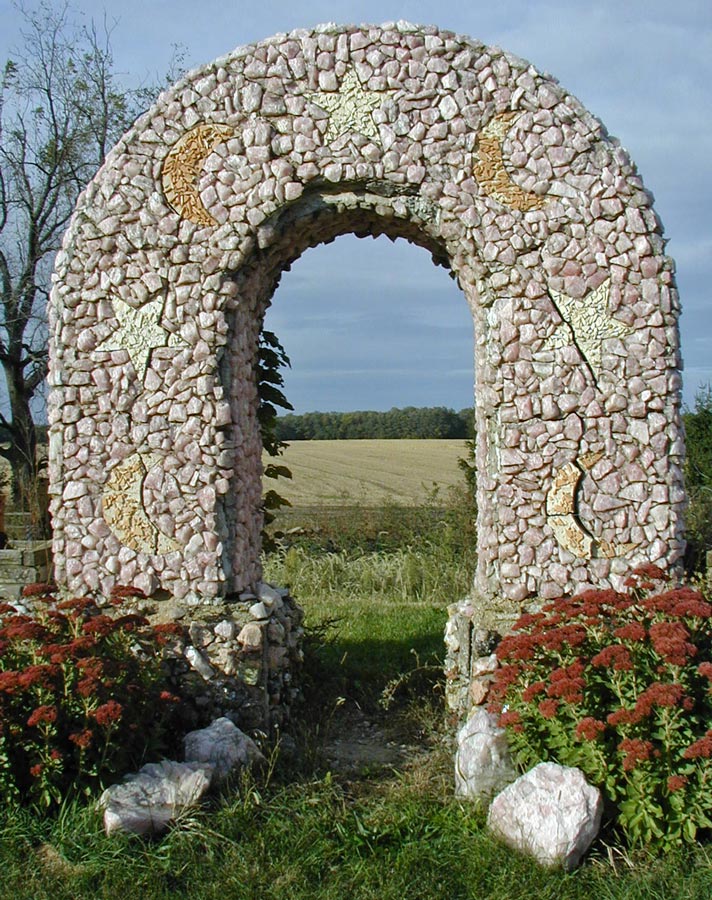
A sturdy rainbow arch decorated with moons and stars crowns the hill. The plain decoration and proportions are quite similar to an arched gateway at Rockome Gardens. Could one have inspired the other? This arch is encrusted with pink quartz and decorated with moons and stars.
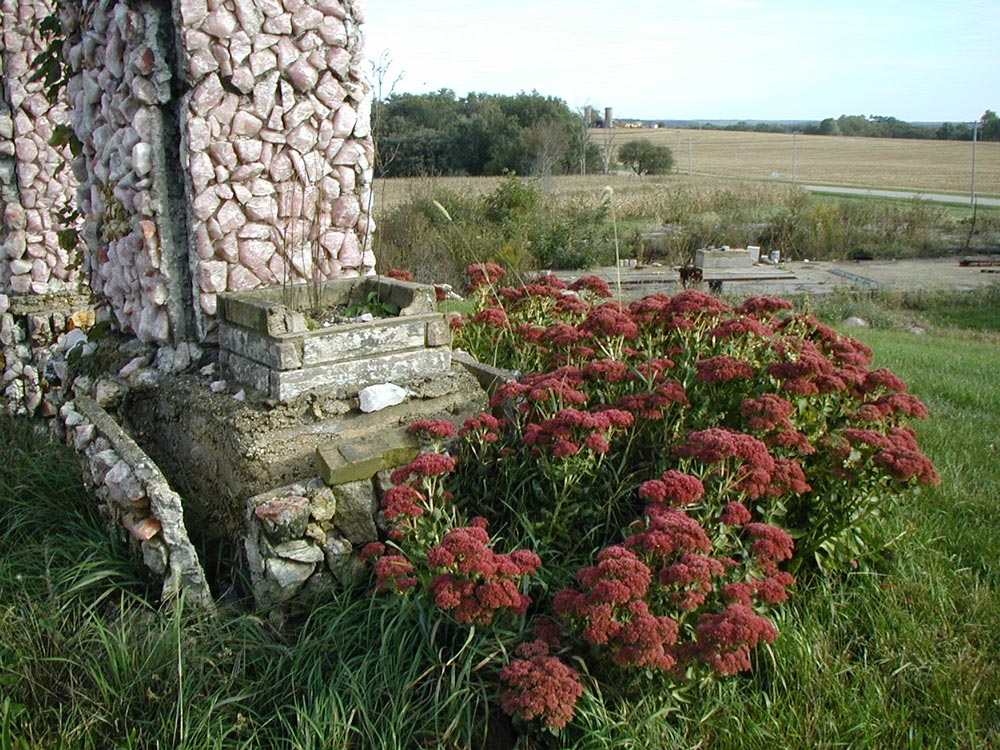
The arch provides a good viewpoint to look down on the ruins of the former dairy building and the farm fields beyond. The back side of the arch is deteriorating but shows how the arch was formed by flat concrete panels attached to a concrete core.
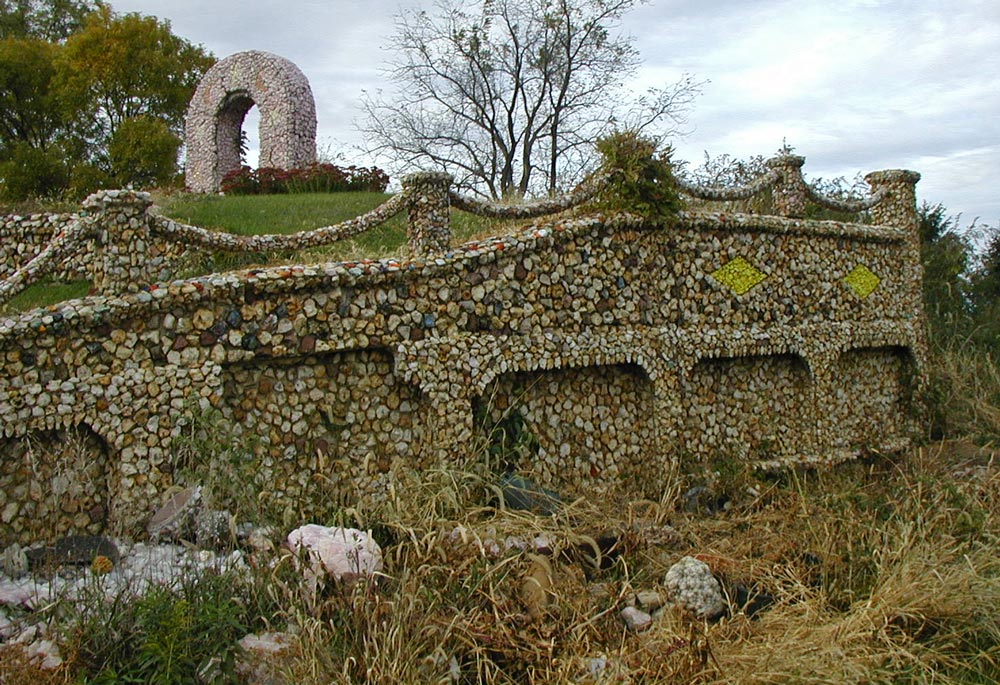
The rear parts of the garden rise higher above the encircling driveway. High retaining walls stand 6 to 8 feet above the road. William Notzke likely cut into the natural hillside slightly to create a larger driveway and parking area for the Jubilee Dairy behind and to the right in the above photo. The necessity of building a retaining wall may have been the original inspiration for the garden.
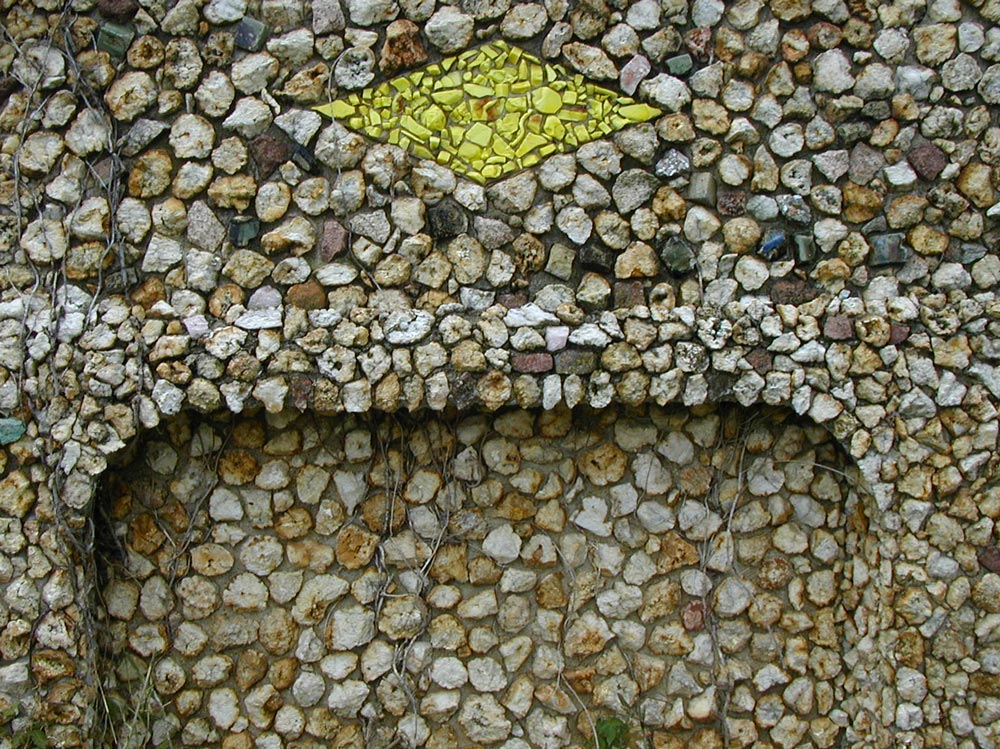
The high walls are visually broken up by square inset panels with rocks carefully placed around the edges. Above these are several diamonds made of colored glass shards.
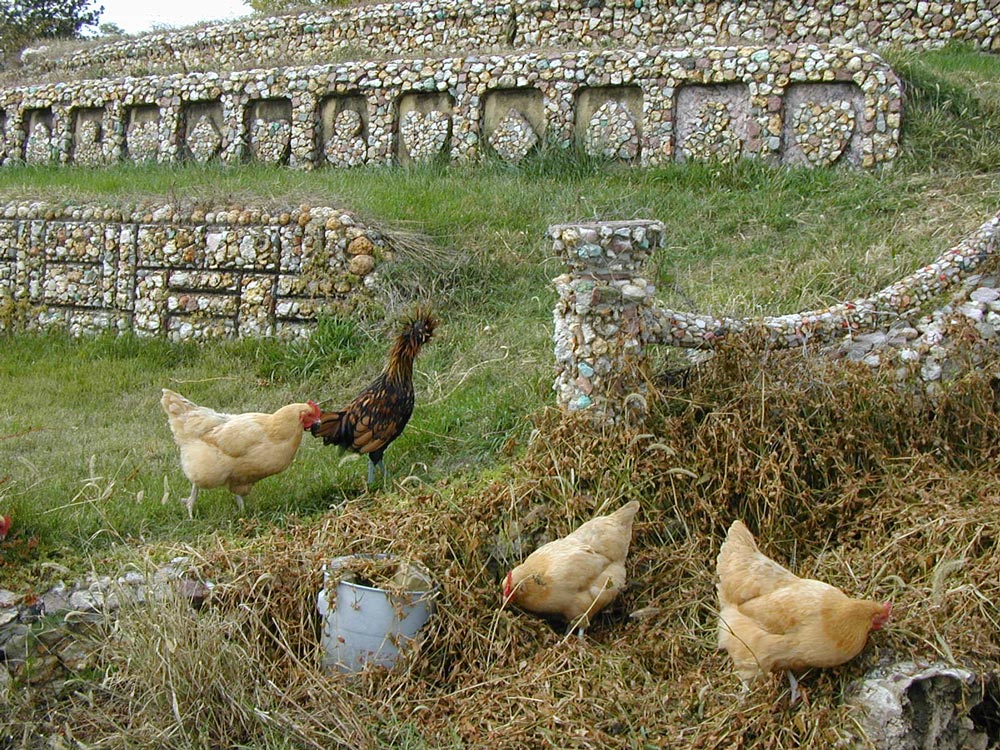
In a 1988 newspaper article, William Notzke's daughter Dorothy complains that he had not planned drainage in the terraces well, leading to deterioration of the terrace and retaining walls. In the 1980s she hired local workmen to repair many of the concrete walls.
